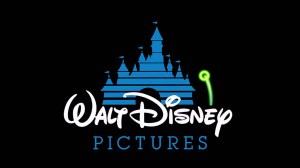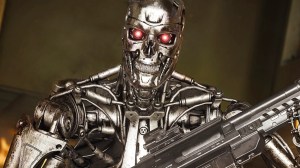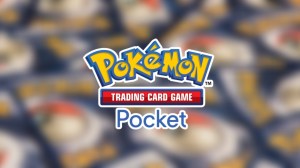Cartoonist Ed Piskor is about to enter the second phase of what is arguably the most ambitious X-Men story ever told.
Videos by ComicBook.com
X-Men: Grand Design takes decades of X-Men stories and continuity from the very start in the Silver Age through Chris Claremont’s storied run and gives it singular, cohesive narrative vision.
The first volume of X-Men: Grand Design covered the Silver Age era and is now available in Marvel Treasury Edition format. The second volume of the trilogy, Second Genesis, is set to debut in July.
ComicBook.com spoke to Piskor about where he is now in his grand plan for the X-Men.

I read the X-Men: Grand Design Treasury Edition, and it is unlike anything Marvel typically published. It is the same design you used for Hip Hop Family Tree. What was it like getting Marvel on board with this idea?
Ed Piskor: It was kind of a victory, getting Marvel to kind of make a book that I want to make. That’s sort of was the game changer. That brought me into the mix when they agreed to publish a book at that size, a size that I’ve become really comfortable with. To be honest, if it wasn’t printed at that size, then Marvel would have been liars. But in a way, I was expecting to be enticed into signing to make the book with that promise and then, at the last minutes, have them say, “Oh, you know what, we crunched some numbers and we have to make it like another trade paperback like all the rest.” And that would have broken my heart. But they listened. I think it’s working out successfully. I think we’re selling plenty of them. So mutual good business on both ends.
The Treasury Edition format really gives your art a lot of room to breath. When you’re working on X-Men: Grand Design, are you thinking about it primarily in terms of how it will look as a finished book? Is that, for you, the definitive edition of the story? Or are you more considering the monthly issues?
In some ways, kind of both because I want issues to be a completely satisfying reads. If you’re going to plunk down five bucks, I’ve got to make sure you’re getting your money’s worth. I’m not such a fan of that decompressed thing where they stretch a story that can be read in 20 minutes across six issues or something. I’m not that guy. I want each issue to be a satisfying experience. But in a collected book, it’s a different experience so I have to have that in mind, as well. The book, that’s the potential perennial seller or whatever. That’s the things that will be seen in the long haul. So that’s just an extra superpower that I’ve developed over the past ten years in independent comics where we recognize you have to make beautiful books if you want people to buy the damn thing.
Recoloring Kirby
For the Treasury Edition, you included a reprint of Stan Lee and Jack Kirby’s X-Men #1 that you recolored. Why did you decide to include that issue and what was your goal in recoloring it?
The goal was to make the greatest Kirby recoloring that’s been done in modern times, man, because when I go to conventions, when I hang out with other cartoonists and we bitch and we moan about the comics industry and blah blah blah, one of the things that comes up routinely is just how the people who put together these collections don’t understand the lightning in the bottle that they have in a lot of ways. So they just kind of slap on some computer coloring, have it printed on bright white paper, and that’s what we get to consume if we want a Kirby reprint. Everybody’s guilty of this. But it’s something that we all bitch about. The people making these decisions are business people; they’re not creative people. It was my way of doing something about it. Even when those comics were printed initially, the newsprint that they were printed on was at least a little bit grayish. It was never this bright white thing that makes your pupils pinhole when you look at it because of the bleach, the pure whiteness of it. That was the goal, to just make a really great Kirby color reprint for once. Also to just stop being a complainer and actually effect change in some way, in my own way.
But also, I wanted to include it to give people who’ve never seen that stuff. They need to take another look at X-Men #1. They need to be acquainted with Kirby. I wanted to really do my best to shine a good light on Kirby. So with each of these big books, we’re going to have some sort of reprint material and I’m going to do the recolor just so it all works as a unit, too, when you look at the complete book. If you see a lot of these other collections where they’ll have their modern day story up front and it’s just this computer-colored thing with all kinds of bells and whistles and airbrushed and stuff and then you go to the reprint section in the back and it’s a completely divorced experience. It competes. The book goes from becoming a single unit to becoming a kind of anthology or something because there’s these completely divorced visions. And doing the recoloring is also a way to just kind of make the whole book a complete, single, solid unit.
Giant-Size X-Men

What issues will you be including with the remaining collections? Or is it too early to say?
I can say for the second one. We did make that announcement, and I’m going to recolor Giant-Size X-Men #1.
Oh, wow.
Yeah. So it’s like 36 pages of Dave Cockrum that I get to study at a molecular level, which was the added bonus of recoloring the Kirby thing, because I’m staring at each of those panels at an extremely giant size and I’m seeing everything that Jack did, and I’m seeing how the inker reacted to what Jack put down. So I’m absolutely looking forward to that opportunity with Giant-Size X-Men and staring at Dave Cockrum’s at such a close proximity because I am a fanboy first. I’m also including some pinups in the next big book. So there’s a classic Art Adams one that I’m going to recolor, a Todd McFarlane Wolverine, a Joe Madureira pinup from an old annual that was before he started drawing X-Men comics, so it’s this image of Colossus fighting the Brood which is really great, and a lot of people haven’t seen that. Then I’m doing another one, Jim Lee. Why not include Jim Lee in the mix? Remind the publisher of DC Comics where he came from.
Looking Back on Jim Lee
Was recoloring Jim Lee particularly special for you? I know that you were a big fan of his X-Men work when you were first reading the series.
Yeah, sure. I’m in my studio right now and I’m looking over at my table full of drawing implements and I have this really haggard, well-read issue of X-Men sitting there right now. Issue #271, “X-Tinction Agenda.” I like to just keep it close to me because it’s so flimsy and well-read that it has no structural integrity. If you hold it up with one hand, it’s beyond floppy. I read and reread and reread this god damn comic hundreds of times. It came out… let’s see when it came out. It came out November of 1990. So I was born in ’82, so I was like eight years old and I remember going to the Rite Aid drug store to get my copy and I think the exact time this came out, one of probably the first issues of the trilogy of issues that Art Adams and Walt Simonson did for Fantastic Four was out at that time, too. I had no real friends to talk to about comics. I just grabbed what I thought looked cool.
What a time. What a time for comics, man. I get Jim Lee X-Men, I get that Art Adams/Walt Simonson Fantastic Four, I get Rob Liefeld New Mutants comics, I get Amazing Spider-Man from either Todd McFarlane or Erik Larsen. These guys were incredible influences to me at the time.
Progress on X-Men: Grand Design
How far along into X-Men: Grand Design are you at this point?
It’s a good question because I feel highly accomplished at this very moment because I finally finished Second Genesis, which is the second mini-series. I put pencil to paper on the last page and finished that up just a couple of days ago. What I’m doing now, I spend all my time building the trade paperbacks. I’ll begin doing my re-coloring on Dave Cockrum probably early next week. If you take a look at that trade that you have, there’s a lot of extra drawing that’s in there. I like to make very elaborate credits pages. I like to design the endpapers. There’s a lot. There’s at least month’s worth of work that goes into making the trade paperback. Generally probably a month and a half to two months worth of work. That’s all kind of invisible because it’s not just thick pages being generated, but it’s all thought work, it’s all design, and it’s all trying things and saying no and trying more things.
So that’s where I’m at now but also what that means by being finished with the drawing of the one issue is that I’m in the research phase for the last book of the trilogy and that simply just means I get to spend weeks and weeks re-reading my favorite X-Men comics. You can’t beat that with a stick.
The Claremont Era

The first volume of Grand Design covered the Silver Age X-Men stuff, which Marvel has revisited previously in works like X-Men: Season One and First Class. Second Genesis is going to get into the Chris Claremont, Dave Cockrum, John Byrne era that is kind of like X-Men sacred text.
Totally.
Did that affect how you approached remixing that material for Grand Design?
I would say that this original volume was way more work than the second volume, because, given the raw materials that I had at my disposal for that first volume, to me, it’s a pretty dark period between Kirby/Lee X-Men and Chris Claremont, Dave Cockrum, et al X-Men. I don’t hear anybody screaming from the mountaintops that they’re Werner Roth X-Men fans or something like that. So I did the best that I could with that stuff when I was doing my adaptation remix. It was tough. A lot of suspension of disbelief. I had a lot of work to do, certainly on the second part of the first trade. With Second Genesis, it’s like dessert or something. It’s like eating dessert before dinner or something. It’s just a tremendous ball. The first issue of Second Genesis, it covers the primo material, man. It introduces the X-Men and goes to Phoenix and all that stuff inside of 40 pages. It was just so much fun. I can’t wait for people to see it, because it’s actually more representative of how I’ve grown as a cartoonist, because the art in the first trade is pretty old to me, actually. I started drawing it at the beginning of 2016. When Second Genesis starts to come out in a couple of months, I just finished drawing it. So that’s a fresher representation of what my art looks like.
But this Claremont material, it’s the material that I know best. So just going in and, first off, having the opportunity to just re-read this stuff for work is just a pleasure because I re-read that run every couple of years anyhow just for pleasure. The idea of being able to play around with those toys myself is an added bonus as you could imagine. That’s pretty much the difference. I had to really try hard with that in-between X-Men stuff. I dig the [Jim] Steranko art, I dig the Neal Adams art, the stories on almost all of that stuff is just completely lacking, though
A Cohesive Style
Did you alter your art style at all for Second Genesis to represent the stylistic shift between the Kirby era and the Cockrum era, or is this all just your own personal style?
It’s certainly the latter. When I jumped into this project, I kind of knew from the very beginning that it would be a mistake to punch above my own weight class and compete with Art Adams or one of these guys. My approach to comics is just completely different. Most of those artists were professional drawers. What they did for the bulk of their careers was just draw comics. I don’t just draw comics, I make comics. I write my comics, I letter my comics, I color my comics. So I’m splitting my energy in many different places to create an Ed Piskor comic while those other guys, even if they “plot” this thing, they’re really just drawing a bunch of stuff. I remember McFarlane talking about the way he approached comic-making was that he’d just draw a bunch of random pages and he would even play around with the order of them before he started writing in the words. I actually love those comics. I like basically any comics that are done by a single person for the most part, whether they succeed as Aristotelian three-act dramas or something or if they’re just chaotic because you’re getting a really good look into the perspective of a single person. That’s the thing that’s lacking with collaborative comics. I make comics and Art Adams draws comics and there is a difference.
More Mutants
Have you reached the point yet where your having to juggle different narratives for different spinoff teams, like New Mutants and X-Factor and all of that stuff?
I’m getting there. There are little bits in Second Genesis. The introduction of the New Mutants happens in the era that I’m covering there. I think, with this last book, that’s certainly going to be in there because “X-Tinction Agenda”, “Mutant Massacre”, all those crazy crossovers are going to take place. “Inferno”. The storytelling approach is going to have to accommodate that and it’s going to have to be even more macro than it already is, in a way, because there’s not going to be an opportunity to have very much soap opera when you’re juggling hundreds of characters. I imagine that these pages are just going to take me freaking forever, too. When you draw 50 mutants on a page or whatever. We’ll see how that goes. All that extra stuff is kind of important to “X-Men” as a whole, so I’m going to have to at least touch on that stuff and it’s going to be a real exercise in trying to figure out how to incorporate all of that to get it to work as a story. I kind of look forward to the challenge of it and it’ll be interesting and fun to see if I stick the landing, as they say.
X-Fans

I know that going into Grand Design you talked about how interacting with a fanbase as notoriously passionate as the X-Men’s would be a new experience for you. Now that the first book is how, how has that experience been so far?
Well, the cool thing is that it is possible, with social media, to be blissfully ignorant. So I don’t get to see the bad stuff if there is any. I literally am fully ignorant. I follow zero people on Twitter and there’s a way in the settings to only see the @ replies from people you follow. So if you follow no people, you see no @ replies. By making this comic, I have to have confidence that I’m worthy to make the damn comic. I just don’t need any negative energy in my vibration to make me second guess myself. I don’t want that. Now that’s the Internet and the Internet’s anonymous and people get to hide behind their keyboard and all of that, so people feel more comfortable talking smack or whatever. I’ve done signings for the book releases and convention appearances after the thing has been on the shelf for a while. I get big lines and people are enthusiastic so there’s nobody who’s come up to talk smack in person. As far as I know, there hasn’t been much bad at all.
Marvel’s Grand Design
A lot of fans were pleasantly surprised that Marvel Comics would publish a book like X-Men: Grand Design. Based on your experience working with Marvel, do you think they’d be open to publishing more comics like Grand Design from creators like yourself who, as you describe it, “make comics” if those creators approached them about it? Do you feel like they’d be receptive to that?
If Marvel was receptive to that, then I would read more Marvel comics. I would like for them to be receptive to that, and I’m taking this opportunity completely seriously. I’m not trying to do a version of Bizarro Comics or like that Strange Tales thing that they did before where it’s like they have this amazing opportunity to get actual cartoonists to make some things for them and then the cartoonists just kind of jerk it off and are trying to be hipsters about it or something. I’m trying to be completely serious, completely. I’m leaning in all the way to try and make a fun superhero comic that I hope fans respond to.
Listen, the big two, they’re just corporations that are interested in making money. If this comic makes money, then I’m sure they’re going to be open to more of this kind of thing, because why would they leave a dollar on the table? I certainly encourage people, if they have an idea in mind, why not send it off to them? If the deal is good, you’re well rewarded if you make a good comic that people like. My suggestion would be, if my comic is proving successful and is a good seller and has popularity, I would hope that a cartoonist that’s submitting ideas won’t shit on what I’m building. What I mean by that is that this X-Men comic is something I was compelled to do. It’s a dream project of sorts. I would hope that that would be the spirit that the cartoonists would submit their ideas in. I really just thought that Strange Tales thing was just the biggest missed opportunity where it’s like everybody is just trying to draw the most obscure characters they can and get away with all the stuff that they can when they absolutely could have made the greatest Spider-Man comic ever or the greatest Fantastic Four comic ever. But they were just kind of screwing around, you know?
So that would be my hope. It’s a blessing and a curse. I hope to see more of it, but I also hope that they can be trusted.
Future Projects
For yourself, are there any other Marvel characters, or even characters outside of Marvel, that you think you’re interested enough in that you could be compelled to do another project like Grand Design?
Yeah, there definitely is. Most Kiby or [Steve] Ditko characters have resonance for me. As far as DC goes, there’s definitely stuff over there that interests me. It would be a lot of fun to do a Batman. I know exactly what I would do with that character. But I also like the idea, too, of bouncing back and forth. Using that [Martin] Scorsese philosophy of “one for you, one for me” when he would talk about doing a studio picture and then an independent film. These are my studio pictures, then I’ll go back and I’ll make more personal work and then, if they’ll have me, I’ll do another studio picture.
But the great thing about being a cartoonist is that I make my own comics, I have my own ideas so I don’t need a job but the other bonus is that if I have a Batman idea, whether DC hires me or not to put it together, I’ll just do it. I’ll just make it, I’ll put it online for free, and if it ends up being the greatest Batman comic ever, they’ll feel pretty dumb for not making money off of it. As far as I know, that would just be considered fanart or fan fiction. I don’t think it’s illegal. I don’t think that my pencils can be taken away from me. If the whimsy compels me, I’m going to make comics about all the stuff that I want to.
For the Love of the X-Men
Going into X-Men: Grand Design, you had said that you weren’t really sure what it was about the X-Men that you loved, but that you thought maybe you’d discover it while creating this series. Now that you’re two-thirds of the way through, have you discovered what it is you love about the X-Men?
The answer is still kind of the same. I just don’t know. I wonder if a part of myself is just trying to figure out who the heck I am or something. Here’s the thing, I hate to use any words like “nostalgia” when it comes to this project because I don’t know the dictionary definition of “nostalgia” off the top of my head, but what I imagine “nostalgia” is is like Rosebud the sled where you put something down for many, many years, you live your life and then you come back to this thing that brings about all this emotion and causes the synapses to fire in ways that they haven’t in a long time. I’ve never put this stuff down. I re-read that X-Men run every couple of years. In some ways, all of my favorite cartoonists, they end up doing their superhero comic at some point. Dan Clowes did Death Ray, Chris Ware would do his little Superman things, the Hernandez brothers will do their versions, they’ll do their superhero comics. Those are the best superhero comics that have ever been done, certainly in the past 20 years. I don’t have a superhero of my own that I’m interested in tackling so it’s like, “OK, my superhero comic will be X-Men, and that’ll be my contribution to the genre”. Then I’ll continue doing the kind of comics that I want to using other subject matters later.
****
The first X-Men: Grand Design Marvel Treasury Edition is available now. X-Men: Grand Design – Second Genesis #1 goes on sale in July.









